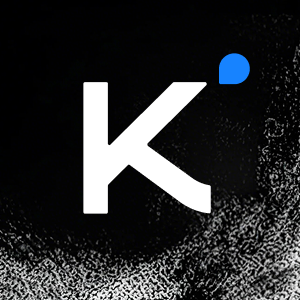Glaze库中Boost Geometry与GeoJSON互转的技术实现
2025-07-08 06:31:36作者:龚格成
背景介绍
在现代C++开发中,处理地理空间数据是一个常见需求。Boost Geometry库提供了强大的几何类型支持,而GeoJSON则是一种广泛使用的JSON格式地理数据交换标准。本文探讨如何利用Glaze这一高性能C++ JSON库,实现Boost Geometry类型与GeoJSON格式之间的相互转换。
核心挑战
实现这种转换面临几个关键技术难点:
- 维度处理:Boost Geometry的点类型可以具有任意维度(2D、3D等),需要通用处理
- 内存布局:Boost Geometry不保证坐标在内存中的连续布局,与std::span不兼容
- 类型系统:需要正确处理GeoJSON中的"type"字段与各种几何类型的映射关系
- 序列化优先级:处理自定义类型与标准容器(如std::vector)的序列化冲突
实现方案
点类型处理
对于点类型,我们采用递归模板技术处理任意维度:
template<uint32_t Format, typename Point, int Dim>
struct write_coordinates {
template<auto Opts>
static void apply(Point& value, auto&&... args) {
write_coordinates<Format, Point, Dim-1>::apply<Opts>(value, args...);
dump<','>(args...);
write<Format>::op<Opts>(boost::geometry::get<Dim>(value), args...);
}
};
// 终止递归的特化版本
template<uint32_t Format, typename Point>
struct write_coordinates<Format, Point, 0> {
template<auto Opts>
static void apply(Point& value, auto&&... args) {
write<Format>::op<Opts>(boost::geometry::get<0>(value), args...);
}
};
GeoJSON格式包装
为生成符合GeoJSON标准的输出,我们添加类型包装:
template<typename Geometry>
struct geo_json_wrapper {
static constexpr std::string_view type = /* 根据几何类型确定 */;
const Geometry& geometry;
};
template <>
struct glz::meta<geo_json_wrapper> {
static constexpr auto value = glz::object(
"type", &geo_json_wrapper::type,
"coordinates", &geo_json_wrapper::geometry
);
};
序列化优先级控制
为避免与std::vector的序列化冲突,我们显式声明自定义序列化:
template <typename Geometry>
requires boost::geometry::util::is_geometry<Geometry>::value
struct glz::meta<Geometry> {
static constexpr auto custom_read = true;
static constexpr auto custom_write = true;
};
性能优化技巧
- 直接缓冲区操作:使用
dump模板函数直接操作输出缓冲区,避免中间字符串构造 - 编译时计算:利用constexpr和模板元编程在编译期确定几何类型特性
- 零拷贝技术:尽可能使用引用而非值传递几何对象
- 内存预分配:对于已知大小的几何类型,预分配足够输出缓冲区空间
完整解决方案架构
- 基础类型适配层:处理点、线、多边形等基本几何类型
- 复合类型处理层:处理几何集合等复杂类型
- 格式转换层:实现GeoJSON特定格式要求
- 异常处理层:提供详细的解析错误信息
实际应用示例
// 定义一个3D点
using point_3d = boost::geometry::model::point<double, 3, boost::geometry::cs::cartesian>;
point_3d p{1.0, 2.0, 3.0};
// 序列化为GeoJSON
std::string json = glz::write_json(p);
// 输出: {"type":"Point","coordinates":[1.0,2.0,3.0]}
// 从GeoJSON解析
point_3d p2;
glz::read_json(p2, json);
结论
通过Glaze库实现Boost Geometry与GeoJSON的互转,我们获得了一个类型安全、高性能的解决方案。关键点在于合理利用C++模板元编程处理几何类型的多样性,同时通过Glaze的自定义序列化机制确保输出符合GeoJSON标准。这种实现既保持了Boost Geometry的灵活性,又获得了现代JSON处理的便利性。
登录后查看全文
热门项目推荐
 AutoGLM-Phone-9BAutoGLM-Phone-9B是基于AutoGLM构建的移动智能助手框架,依托多模态感知理解手机屏幕并执行自动化操作。Jinja00
AutoGLM-Phone-9BAutoGLM-Phone-9B是基于AutoGLM构建的移动智能助手框架,依托多模态感知理解手机屏幕并执行自动化操作。Jinja00 Kimi-K2-ThinkingKimi K2 Thinking 是最新、性能最强的开源思维模型。从 Kimi K2 开始,我们将其打造为能够逐步推理并动态调用工具的思维智能体。通过显著提升多步推理深度,并在 200–300 次连续调用中保持稳定的工具使用能力,它在 Humanity's Last Exam (HLE)、BrowseComp 等基准测试中树立了新的技术标杆。同时,K2 Thinking 是原生 INT4 量化模型,具备 256k 上下文窗口,实现了推理延迟和 GPU 内存占用的无损降低。Python00
Kimi-K2-ThinkingKimi K2 Thinking 是最新、性能最强的开源思维模型。从 Kimi K2 开始,我们将其打造为能够逐步推理并动态调用工具的思维智能体。通过显著提升多步推理深度,并在 200–300 次连续调用中保持稳定的工具使用能力,它在 Humanity's Last Exam (HLE)、BrowseComp 等基准测试中树立了新的技术标杆。同时,K2 Thinking 是原生 INT4 量化模型,具备 256k 上下文窗口,实现了推理延迟和 GPU 内存占用的无损降低。Python00 GLM-4.6V-FP8GLM-4.6V-FP8是GLM-V系列开源模型,支持128K上下文窗口,融合原生多模态函数调用能力,实现从视觉感知到执行的闭环。具备文档理解、图文生成、前端重构等功能,适用于云集群与本地部署,在同类参数规模中视觉理解性能领先。Jinja00
GLM-4.6V-FP8GLM-4.6V-FP8是GLM-V系列开源模型,支持128K上下文窗口,融合原生多模态函数调用能力,实现从视觉感知到执行的闭环。具备文档理解、图文生成、前端重构等功能,适用于云集群与本地部署,在同类参数规模中视觉理解性能领先。Jinja00 HunyuanOCRHunyuanOCR 是基于混元原生多模态架构打造的领先端到端 OCR 专家级视觉语言模型。它采用仅 10 亿参数的轻量化设计,在业界多项基准测试中取得了当前最佳性能。该模型不仅精通复杂多语言文档解析,还在文本检测与识别、开放域信息抽取、视频字幕提取及图片翻译等实际应用场景中表现卓越。00
HunyuanOCRHunyuanOCR 是基于混元原生多模态架构打造的领先端到端 OCR 专家级视觉语言模型。它采用仅 10 亿参数的轻量化设计,在业界多项基准测试中取得了当前最佳性能。该模型不仅精通复杂多语言文档解析,还在文本检测与识别、开放域信息抽取、视频字幕提取及图片翻译等实际应用场景中表现卓越。00 GLM-ASR-Nano-2512GLM-ASR-Nano-2512 是一款稳健的开源语音识别模型,参数规模为 15 亿。该模型专为应对真实场景的复杂性而设计,在保持紧凑体量的同时,多项基准测试表现优于 OpenAI Whisper V3。Python00
GLM-ASR-Nano-2512GLM-ASR-Nano-2512 是一款稳健的开源语音识别模型,参数规模为 15 亿。该模型专为应对真实场景的复杂性而设计,在保持紧凑体量的同时,多项基准测试表现优于 OpenAI Whisper V3。Python00 GLM-TTSGLM-TTS 是一款基于大语言模型的高质量文本转语音(TTS)合成系统,支持零样本语音克隆和流式推理。该系统采用两阶段架构,结合了用于语音 token 生成的大语言模型(LLM)和用于波形合成的流匹配(Flow Matching)模型。 通过引入多奖励强化学习框架,GLM-TTS 显著提升了合成语音的表现力,相比传统 TTS 系统实现了更自然的情感控制。Python00
GLM-TTSGLM-TTS 是一款基于大语言模型的高质量文本转语音(TTS)合成系统,支持零样本语音克隆和流式推理。该系统采用两阶段架构,结合了用于语音 token 生成的大语言模型(LLM)和用于波形合成的流匹配(Flow Matching)模型。 通过引入多奖励强化学习框架,GLM-TTS 显著提升了合成语音的表现力,相比传统 TTS 系统实现了更自然的情感控制。Python00 Spark-Formalizer-X1-7BSpark-Formalizer 是由科大讯飞团队开发的专用大型语言模型,专注于数学自动形式化任务。该模型擅长将自然语言数学问题转化为精确的 Lean4 形式化语句,在形式化语句生成方面达到了业界领先水平。Python00
Spark-Formalizer-X1-7BSpark-Formalizer 是由科大讯飞团队开发的专用大型语言模型,专注于数学自动形式化任务。该模型擅长将自然语言数学问题转化为精确的 Lean4 形式化语句,在形式化语句生成方面达到了业界领先水平。Python00
最新内容推荐
电脑PC网易云音乐免安装皮肤插件使用指南:个性化音乐播放体验 开源电子设计自动化利器:KiCad EDA全方位使用指南 Jetson TX2开发板官方资源完全指南:从入门到精通 昆仑通态MCGS与台达VFD-M变频器通讯程序详解:工业自动化控制完美解决方案 基恩士LJ-X8000A开发版SDK样本程序全面指南 - 工业激光轮廓仪开发利器 PhysioNet医学研究数据库:临床数据分析与生物信号处理的权威资源指南 QT连接阿里云MySQL数据库完整指南:从环境配置到问题解决 Python案例资源下载 - 从入门到精通的完整项目代码合集 2022美赛A题优秀论文深度解析:自行车功率分配建模的成功方法 TJSONObject完整解析教程:Delphi开发者必备的JSON处理指南
项目优选
收起
deepin linux kernel
C
24
9
Ascend Extension for PyTorch
Python
223
245
Nop Platform 2.0是基于可逆计算理论实现的采用面向语言编程范式的新一代低代码开发平台,包含基于全新原理从零开始研发的GraphQL引擎、ORM引擎、工作流引擎、报表引擎、规则引擎、批处理引引擎等完整设计。nop-entropy是它的后端部分,采用java语言实现,可选择集成Spring框架或者Quarkus框架。中小企业可以免费商用
Java
9
1
暂无简介
Dart
672
157
本项目是CANN提供的数学类基础计算算子库,实现网络在NPU上加速计算。
C++
662
313
React Native鸿蒙化仓库
JavaScript
262
323
🔥LeetCode solutions in any programming language | 多种编程语言实现 LeetCode、《剑指 Offer(第 2 版)》、《程序员面试金典(第 6 版)》题解
Java
64
19
仓颉编译器源码及 cjdb 调试工具。
C++
134
867
仓颉编程语言测试用例。
Cangjie
37
860
openGauss kernel ~ openGauss is an open source relational database management system
C++
160
218